What is Traditional Marketing?
Marketing is basically an effort made by service providers or product providers to reach the market share they want. Traditional marketing in its simplest definition is a method of promotion, advertising, and branding campaigns that have been carried out by business people for a long time, and their effectiveness has been proven, both qualitatively and quantitatively.
Methods that are categorized as traditional marketing are all kinds of marketing activities that use the media:
- Billboard and Videotron
- Television
- Advertising in print media (newspapers and magazines)
- Leaflets and brochures
- Product placement in feature films and TV series
- and so forth
Marketing methods using these media are still widely used for the marketing needs of a company.
What is Digital Marketing?
Digital marketing is a method that is predicted as a new era of global marketing methods. With the internet phenomenon that reaches various aspects of life, it is hoped that marketing can not only form brand awareness, or just promotion, but also by using an internet platform, the reach of a marketing campaign can extend across countries.
Things that are categorized as digital marketing include:
- Social Media (FB, Instagram, Twitter, etc.)
- Email marketing (newsletters, email blasts, etc.)
- Content industry
- Business networking sites, such as LinkedIn
- Pop-up ads, click bait
- and so forth
Difference cost
Traditional marketing methods that still use TV and print media platforms clearly have a higher cost than digital marketing. Why? Because the production flow is different. Advertisements on a medium require slots, for TV, each slot even has a different price list.
Most vendors want their ads to be shown in prime time slots where TV shows are the most consumed. The cost required to place an ad in this slot is certainly not small. The count is per second.
Market Engagement
One of the things that is very concerned about in building brand awareness is how the market interacts with the brand. Traditional marketing positions the market as a passive recipient. It’s simple, have you ever come across interactive advertisements that appear on TV? Has never been? Same. I haven’t been either.
Meanwhile, one of the indicators of digital marketing success, apart from exposure, is also market engagement, where the market is required to actively follow the links of information scattered on social media pages and search sites.
Every click is an indicator of activeness, traffic, number of viewers and every second the market spends consuming digital advertising media is an indicator that can be a determining factor for a successful digital campaign or not in building brand awareness.
Best of all, all these indicators can be updated in real-time by using tools such as Google Analytics. Here, digital marketing service users can control and evaluate which methods are working and which are not.
One advantage of traditional marketing today is that it reaches remote areas, and the prestige it generates.
Mostly because cellular providers are hindered by infrastructure and terrain obstacles. But even in remote areas you can find TVs. Besides that is the aspect of prestige. How often are we in awe of the sensational tobacco companies’ ads that appear on prime-time slots in astonishing time and repetition? Isn’t that also a sign of a successful marketing campaign?
Focus on the Market
All products, whether in the form of goods or services, always have an ideal target market. At this point, traditional marketing is far behind digital marketing. Through various search data, location, and personal data, digital marketing users can easily reach the market demographics they want.
The analytical features of digital marketing enable users to reach specific markets, while traditional marketing is still like gambling; where in their ad serving slots, they expect a significant percentage of the demographics of their targeted market.
For more information about Digital Marketing Consultant Malaysia, please visit https://www.gomarketing.com.my/

















